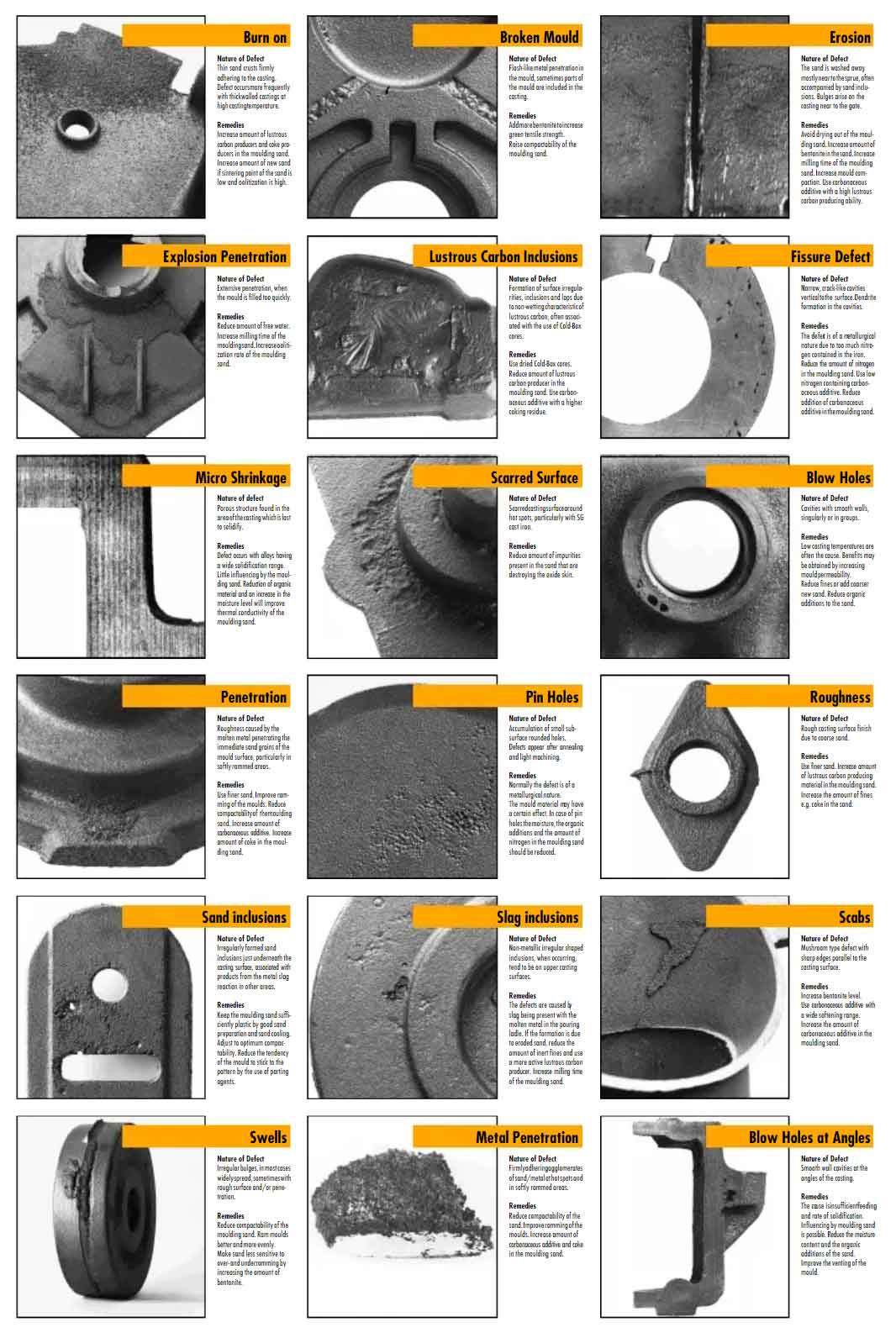Casting defects can significantly impact the quality and performance of castings. To minimize these defects and ensure high-quality castings, various strategies can be employed throughout the casting process. Here are some key strategies for minimizing casting defects:

- Proper Design and Simulation:
- Design for Manufacturability: Design the casting with considerations for proper material flow, solidification patterns, and parting line placement to minimize the risk of defects.
- Use Casting Simulation Software: Employ advanced casting simulation software to predict and analyze potential defects, such as shrinkage, porosity, and hot spots. This enables optimization of the casting process before actual production.
- Meticulous Mold Preparation:
- Proper Mold and Core Venting: Ensure adequate venting of molds and cores to allow the escape of gases and prevent gas-related defects like porosity and blowholes.
- Mold Coating: Apply suitable coatings to molds and cores to minimize metal/mold interaction and reduce the likelihood of defects like metal penetration and veining.
- Optimized Gating and Riser Design:
- Proper Gating System: Design an efficient gating system to facilitate a smooth flow of molten metal into the mold, minimizing turbulence and the potential for defects like misruns and cold shuts.
- Effective Riser Placement: Strategically position risers to promote directional solidification and feed the casting effectively, reducing the risk of shrinkage defects.
- Control of Pouring Parameters:
- Optimal Pouring Temperature: Maintain the pouring temperature within the recommended range to avoid excessive heat loss, solidification issues, and associated defects.
- Pouring Techniques: Employ suitable pouring techniques, such as bottom pouring or controlled pouring, to minimize turbulence, reduce the introduction of oxides, and prevent defects like metal splashing.
- Quality Assurance and Process Control:
- Strict Process Control: Implement rigorous process controls, including proper melt handling, metal treatment, and accurate alloying, to ensure consistent and controlled casting conditions.
- Non-Destructive Testing (NDT): Utilize NDT methods such as X-ray, ultrasound, or liquid penetrant inspection to detect internal defects and ensure the integrity of castings.
- Quality Inspections: Perform regular inspections at various stages of the casting process to identify potential defects early and take corrective actions promptly.
- Material Selection and Testing:
- Suitable Casting Alloys: Select casting alloys with properties that meet the requirements of the intended application and minimize the risk of defects.
- Material Testing: Conduct thorough material testing, including chemical analysis and mechanical testing, to verify the quality and integrity of the casting material.
- Continuous Improvement and Learning:
- Learn from Defects: Analyze and document casting defects to identify root causes and implement corrective measures to prevent their recurrence.
- Training and Skill Development: Provide training and skill development programs for foundry personnel to enhance their knowledge and expertise in casting processes.
By implementing these strategies, foundries can minimize casting defects, improve the overall quality of castings, and enhance the efficiency and productivity of their casting operations.
